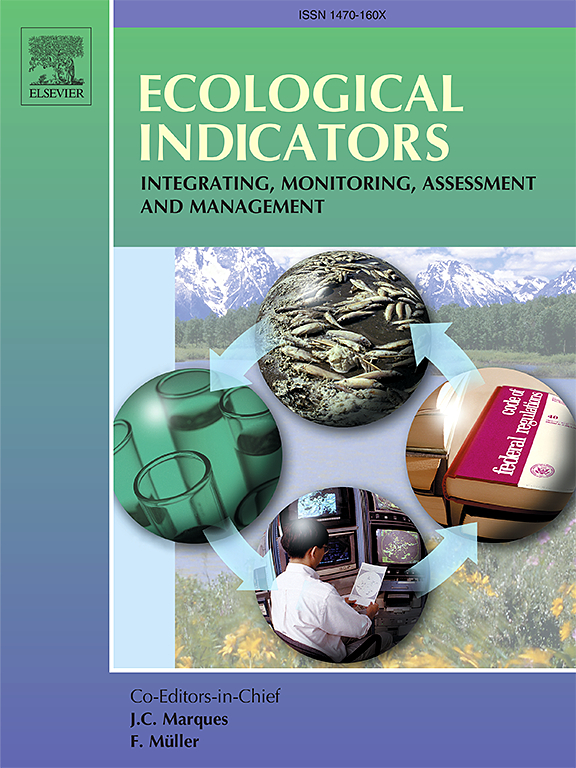Influence mechanism of natural factors and human socio-economic activities on ecosystem health in arid regions of Central Asia: A case study of Fuyun area, northwest China
Bi, Xu , Shi, Kailong , Fu, Yongyong , Zhou, Wangyue , Zhao, Ruoning , Bao, Haijun
2025-04-01 null null 173(卷), null(期), (null页)
Ecosystem health is a critical focus in ecosystem management. Understanding the spatial distribution patterns and driving factors of ecosystem health is crucial for efficient governance and restoration. However, research in arid pastoral regions remains limited. This research examined the ecosystem health of Fuyun County, a representative pastoral area located in the Altay Prefecture of Xinjiang, China. Utilizing a deep learning-based VigorOrganization-Resilience-Service (VORS) framework, this paper evaluated the spatio-temporal variation characteristics of the ecosystem health index (EHI) and its correlation with natural and human socio-economic factors across different elevation gradients in 2000, 2010, and 2020. Subsequently, the Partial Least Squares Structural Equation Modeling (PLS-SEM) and mediation analysis were employed to investigate the interactive mechanisms among influencing factors and elucidate the drivers of EHI changes. The findings indicated that: (1) EHI exhibited significant spatial heterogeneity, decreasing along the elevation gradient from north to south. (2) Potential evapotranspiration (PET), temperature, and precipitation were the primary drivers of EHI spatial differentiation. Within a decade, climate factors dominated EHI changes, whereas over two decades, socio-economic variables such as population density and per capita GDP became primary drivers. (3) In low- and medium-elevation regions (460-2460 m), EHI was positively correlated with precipitation. In high-elevation areas (above 2460 m), EHI showed a positive correlation with both temperature and potential evapotranspiration. Natural and human socio-economic activities significantly impacted ecosystem health in low- and medium-elevation regions, while human socio-economic activities had no significant influence in high altitude regions. (4) As a mediator, PET amplified the negative effect of temperature on EHI, weakened the positive impact of precipitation and the digital elevation model (DEM) on EHI, and strengthened the positive influence of slope on EHI. Meanwhile, the mediator grazing pressure index weakened the negative impact of per capita GDP and population density on EHI, but enhanced the positive effects of distance from roads and the proportion of grassland on EHI. These results offer valuable policy insights and scientific guidance for ecological conservation, promoting sustainable development in pastoral regions.
相关推荐
- CTHNet: A CNN-Transformer Hybrid Network for Landslide Identification in Loess Plateau Regions Using High-Resolution Remote Sensing Images [2025-04-01]
- Ecosystem health assessment based on deep learning in a mountain-basin system in Central Asia's arid regions, China [2025-04-01]
- Ecological Security Pattern Construction in Loess Plateau Areas-A Case Study of Shanxi Province, China [2025-04-01]
- Assessment of Spatio-Temporal Variation and Driving Mechanism of Ecological Environment Quality in the Arid Regions of Central Asia, Xinjiang [2025-04-01]



